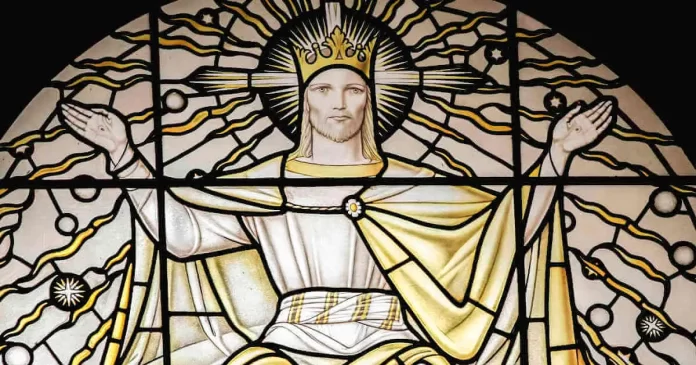The feast of the Solemnity of Christ the King was introduced into the Western liturgical calendar in 1925 by Pope Pius XI, with the encyclical Quas primas. The Pontiff was about to close the jubilee year of 1925 amid the growing secularist nationalism that arose after the fall of the European kingdoms after the First World War. In that context, he decided to institute the solemnity to highlight a King “whose Kingdom will have no end.”
Surprisingly, the first parish in the world consecrated to Christ the King was established by Pope Pius XI not in Europe, but in Cincinnati, Ohio (United States), in 1926.
“The 225 faithful who attended the first Mass of Our Lord Christ the King on December 5, 1926 embodied the essence of what it means to be ‘church.’ Without bricks or mortar of their own, this gathering of believers placed their faith in Providence and celebrated the first liturgies in a humble environment,” reads an account published on the parish website.
The absence of electricity at the first Eucharist caused the space to be illuminated by the headlights of parked cars. The parish priest, Father Edward J. Quinn, who had been a chaplain during World War I, turned to his Army Mass team.
The current church, built in the 1950s, was designed by famed church architect Edward J. Schulte in what is known as the “brutalist” style.
Despite the fact that the first parish dedicated to Christ the King was erected in the United States, some American clergy initially had difficulty explaining the new solemnity in the context of Protestant patriotism, which disapproved of kings and kingdoms in opposition to democracy. as the most perfect form of government.
A key passage from Quas primas provided Catholic preachers with a useful synopsis:
“This kingdom (of Christ) is spiritual and has to do with spiritual things… The Gospels present this kingdom as one into which men prepare to enter by penitence, and cannot actually enter except by faith and by Baptism, which, although it is an external rite, means and produces an internal regeneration. This kingdom is opposed to none other than that of Satan and the power of darkness. He demands from his subjects a spirit of detachment from riches and earthly things, and a spirit of meekness. They must hunger and thirst for righteousness, and even more so, they must deny themselves and bear the cross.”
Pope Pius XI established that the feast be celebrated on the last Sunday of October so that it always took place before the solemnity of All Saints. But in the new liturgical calendar of 1970, the observance of it in the Roman Rite was moved to the last Sunday of Ordinary Time. Therefore, the earliest date it can occur is November 20 and the latest is November 26.



